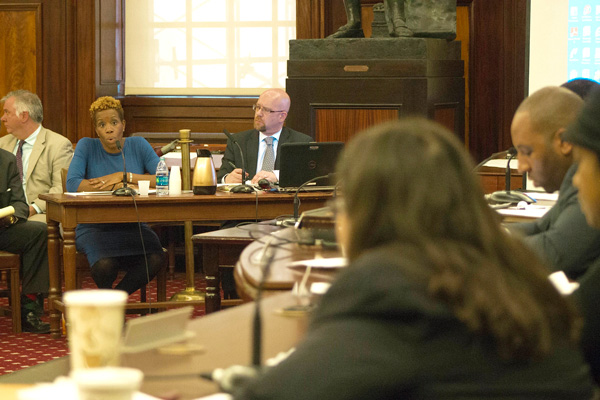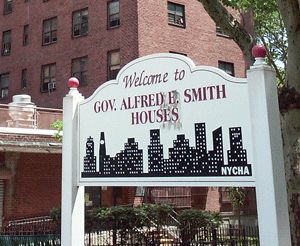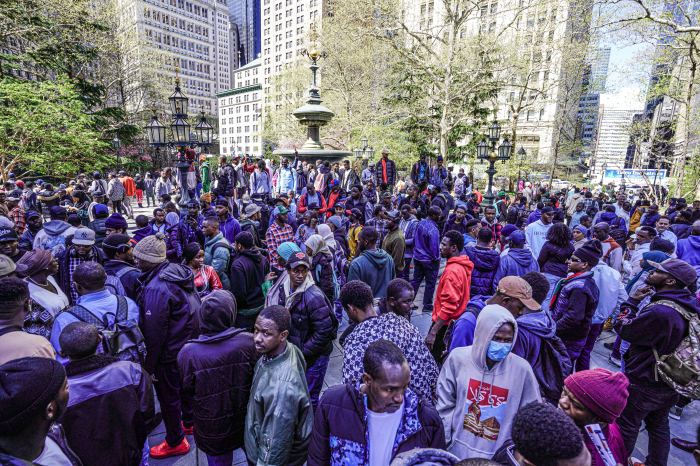
BY ZACH WILLIAMS | Mayor Bill de Blasio plans to transform the New York City Housing Authority by streamlining operations, raising tenant fees, shifting funding and seeking partnerships with private developers.
The authority’s finances have only further deteriorated in recent years with nearly $17 billion in outstanding repairs among its 334 housing developments and an overall $1 billion loss in operating revenue since 2001.
Years of divestment by the state and federal governments requires that the city make its own way in ensuring the financial future of NYCHA, which comprises about 8 percent of the city’s rental housing, de Blasio said at a May 19 press conference announcing a plan called Next Generation NYCHA.
“This is, at this moment, the worst financial crisis in the history of NYCHA,” he said. That’s what these years of disinvestment have taken us to. And I say that with pain.”
He added that his administration has already taken several measures to relieve some pressure from authority finances by waiving the fees NYCHA pays for police services — a $70 million annual savings — or property taxes to the city — a $30 million annual savings.
About $300 million in capital funds were committed for capital repairs and safety. The plan aims to save $4.6 billion in repair needs over the next decade, according to de Blasio.
“So we’re going from an organization that’s one month away from going over the edge, in terms of its expense budget, to one that, over the next decade, will produce a $230 million surplus,” he added.
There are 15 elements of the plan organized into four overall goals: achieving financial stability, operational efficiency, building and maintaining affordable housing, and improving services for tenants.
NYCHA will make efforts to improve its rent-collection rate from its current level of about 75 percent. Parking at developments will increase toward market rates. Tenants’ concerns will now be processed via 311 as part of the process of shifting 10,000 NYCHA employees to other city agencies.
About 13,000 units of new housing will be created, most of which are intended to be nearly 100 percent affordable housing, while some will have market-rate tenants in order to raise revenue for the authority.
New partnerships among city agencies and community groups will allow the authority to concentrate more on its core mission of housing provision rather than social services, according to the plan.
The location of the new developments will be announced in August.
Councilmember Corey Johnson expressed support in a statement for the plan.
“NYCHA residents have been treated like second-class citizens for too long,” he said. “No tenant should have to wait several months or longer for basic repairs. No child should have to play on broken playgrounds and no senior should have to walk on cracked pavement.”
Even when repairs are made, they are often shoddy, said Chante Smith, a resident of the Baruch Houses on the Lower East Side. One plumbing repair resulted in a big hole in a wall, offering a prime opportunity for rats to scurry through the building, she recalled.
Weeks can go by unless a situation is so dire that it must be addressed immediately, such as in the case of flooded apartments, said Jessica Vasquez, another Baruch resident.
Sixty percent of NYCHA buildings are more than 50 years old.
James Johnson, a longtime resident of the Baruch Houses, said management at the aging complex needs to improve. Johnson said that he had a toilet that when flushed would flood his bathtub.
But if tenants try to make their own repairs it only results in management holding a grudge against them, he said.
“It’s f—– up,” he said. “It needs help.”

















